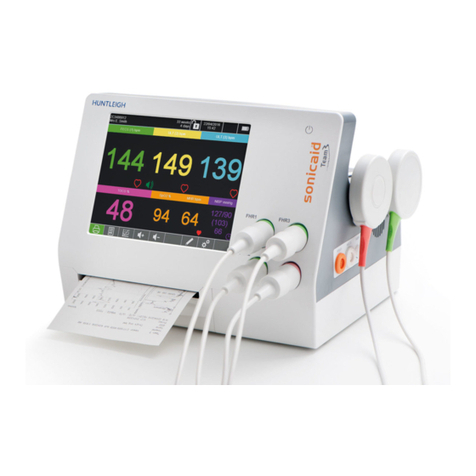
1.2 General Description
The Flowtron Excel system is a specially designed non-invasive system for the
prevention of deep vein thrombosis (DVT). The application of external
pneumatic compression has two effects :
1. Augments venous blood flow velocity, thereby reducing stasis, and
2. Enhances fibrinolytic activity to reduce the risk of early clot formation.
The Flowtron Excel system is comprised of a pressure regulated pump unit and
a pair of calf or thigh length, single patient use garments. The pump provides
intermittent cycles of compressed air which alternately inflate the
single-chambered garments. The compression applied on the extremity
augments venous blood flow velocity and stimulates fibrinolysis.
The pump operates on a 60-second, automatically timed cycle consisting of
approximately 12 seconds of compression followed by approximately 48
seconds of deflation. The recommended operating pressure is 40 mmHg, unless
otherwise prescribed by a physician.
The pump unit is a piece of precision equipment, and providing it is handled
and properly serviced (normally every 12 months), should give long and
trouble-free service.
Controls of the pump unit consist of :
·Electric power switch (green rocker switch) illuminated when in ‘ON’
position, as is the green LED on the top panel.
·Pressure control knob. Pressure adjustment range is between 30 mmHg
and 60 mmHg.
·Single Leg button with amber LED, when selected allows for single
garment use without the alarm being falsely activated.
·Illuminated display that indicates system pressure and also fault messages.
The Flowtron Excel pump unit has both audible and visual alarms. When a fault
condition occurs, the red LED flashes and the description "HI, Lo or F" is
indicated on the display panel on the pump. If the fault condition is unaltered,
the audible alarm will increase in pitch until the fault is corrected and the
system is reset.
247901 1-2 Issue 1
March 1998





























